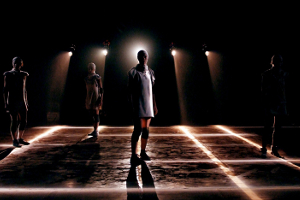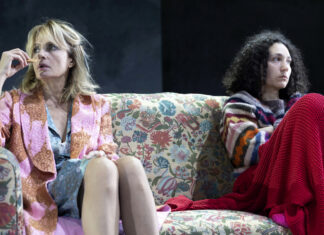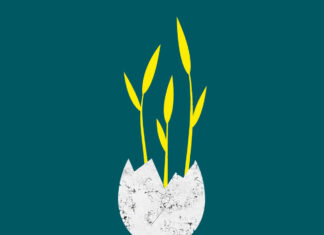
«Then he suddenly heard that voice, just like in the old times; but the memories were resurfacing little by little: he felt like he was carrying them inside, like stones of a crumbled wall.» These words, found in a brilliant book by Ghassan Kanafani, Returning to Haifa, slam from the dark rent by small lights in which Muta Imago are presenting their Displace, conclusive step of the two year long homonymous project, divided in two separated pieces: The Red Rage and Ruins.
A voice carries the memories, like a vivid recall of human touch lost in the darkness, whispering: «Remember me». Purcell’s Dido’s Lament echoes as a sinister anticipation of what is going to happen: the collapse and – through this – the memory.
But that words stay there: in the collapse the memory is immanent, already vivid and present in that deadly sign; as to say that in the act of building there already are the ruins. Displace is a “dislocation”, both mental and physical, it’s the uprooting from a homeland. Brought up to light this very year which celebrates the 150th anniversary of Italy’s unification, this concept has a shattering power, as shattering as the hit which comes to destroy the wall and the believes. A place to which the roots were deeply attached, now it’s nothing more than a memory, reduced to dust.
Four female figures (Anna Basti, Chiara Caimmi, Valia La Rocca, Cristina Rocchetti) move on stage and on stage they move their own dislocation. They are refugee, profaned and uprooted. From the inside of them the resistant voice of Euripides’s The Trojan Women – model of human strength – breaks out when the clamor is gone and there is nothing but a frozen and wounded heart, the imminent loss of a memory. If rage is that instinctive move of reaction, the ruins raise a thick dust which first flies over the fragments and then covers them with its veil of oblivion. But between the veil and the ruins that memory is still alive: “I might as well have died with the dead”, says the voice of a survivors, unable to make sense out of the collapse. And he himself is the very image of that collapse, with his weak tread over the remains of a fallen civilization.
The peculiar sign of Muta Imago, which is growing finer and finer, is more visible in Claudia Sorace‘s direction and light design, which place the bodies in a constant balance between an individual symmetry and a collective asymmetry. “I am the motive of the world”, states Riccardo Fazi’s text and then both the elements become clear: Muta Imago draw a hard and resistant sign, which gives to mankind the power of a new anthropocentrism, a concept that nowadays has been turned into a crime against the humankind (individualism).
The man can make the world, benefiting for himself and for his own nature. These seem the words a purifying rain should fall on, words that can put the ruins back together in the stem of a boat; a boat that can sail off and pass through the dark, toward a land – our land – no longer wasted.
Simone Nebbia
[translated by Sergio Lo Gatto]











